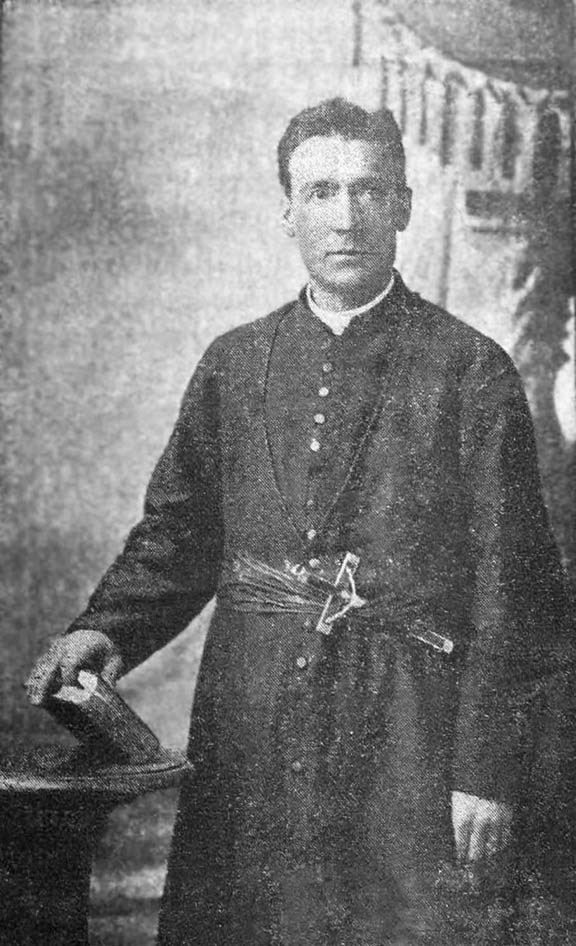Jim Cameron
"Take up the White Man's burden
Send forth the best ye breed
Go send your sons to exile
To serve your captives' need."
From "The White Man's Burden"
by Rudyard Kipling
Some came for money, some for adventure, to find a future, some to escape the past. In the case of David Thompson and his party they came to map the land that the moneymakers would later traverse, the moneymakers who first came in the form of fur traders. In 1806, Simon Fraser, employed by the North West Co., established fur trading sites at Forts McLeod, George (now Prince George) and St. James. The First Nations people were encouraged to settle in permanent communities to facilitate trading.
There was, however, a group who did not come for the money. Instead, they shouldered "The White Man's Burden"; that particular inner sense of duty requiring the subjugation and civilizing of all who do not live according to the pre-established rules and mores.
Cranbrook town founder James Baker was one; he certainly did not come for the money. He was here to broaden the British Empire, as with his brothers who journeyed to Africa and India to do the same.
Although such men most assuredly put their stamp on the new lands there were those who likewise made their mark for a different reason: to broaden the empire of God. They were the missionaries, the men in the black sent out by their respective churches to bring the people under their religious wings; the men whobecame known as, "the Black Robes."
Jesuits such as Pierre-Jean DeSmet — who came into the area from Idaho in 1845 and baptized hundreds of Kootenay and Columbia Indians along the way — and Father Leon Fouquet, founder of the St. Eugene Mission, gave their utmost to spread the word. They did more than simply preach to the masses, however. The advance of the Second Nations people brought many diseases that decimated those of the First, who turned to the Black Robes for vital medical services. So too did missionaries act as buffers between the races, having generally secured (at least begrudgingly) the respect of both. The villages of the Indians, established as trading posts, soon became focal points for missions.
In 1861 Father Leon Fouquet, Oblate of the Most Holy and Immaculate Virgin Mary, founded a residential school in what is now the town of Mission B.C. In 1874, he travelled east to the Kootenays to establish the St. Eugene Mission, named for Oblate founder Eugene de Mazenod (raised to sainthood in 1995).
Father Fouquet and his fellow missionaries built a two–story four-roomed log cabin to function as meeting hall, church, hospital and living quarters. A log church was constructed in 1880; wheat and gardens planted, brought in farm machinery — the first in the district — a flour mill added, cattle herded and another house constructed to serve as a school. Both the garden and the hospital served not only the local mission but also the many miners toiling hopefully along the Wild Horse and Perry Creeks. The mission continued to grow with the addition of three large buildings in 1890 to serve as a boys and girls school and staff quarters. The same year a bandmaster was brought in from the coast and the long-standing St. Eugene Indian Brass Band came into existence. The St. Eugene Mission was, in fact, a major hub of the East Kootenays for many years.
Of the many missionaries who served in the Kootenays it is unarguably the Roman Catholic oblate priest Father Nicolas Coccola who brought about the greatest changes and whose legacy remains the strongest today.
Nicolas Coccola hailed from the island of Corsica, under the French flag. Born in 1854 and raised in a time of military and theological conflict, he was, as were the large majority of missionaries, a man of action, confidence, deep convictions and discipline. He arrived in New York City in 1880, took a train to San Francisco and journeyed by sternwheeler to Victoria. Ordained a Roman Catholic priest shortly thereafter, he was sent to the small hamlet of Kamloops in 1881. He and two others served on a small reserve, mostly constructing homes, tending gardens and learning practical medical skills that would serve so many over the years.
In 1883 Father Coccola was contacted by Father Lacombe of Alberta and informed that his services were required in the railway camps of the CPR as the track gangs slowly made their way west through the Kicking Horse Pass. He soon found himself at Eagle Pass, serving the Donald and Golden area and was present at Craigellachie B.C. in 1885 to witness the driving of the last spike joining the CPR into a single transcontinental route. Also present was Superintendent Sam Steele of the North West Mounted Police with whom Father Coccola would maintain a cordial and mutually beneficial relationship..
In 1887 Father Coccola was once more re-assigned, this time to replace Father Fouquet at the St. Eugene Mission. One of his many wishes was to construct a proper church but money, or rather the lack of it, was a hindrance. That is, until the day in the spring of 1893 when a local gentleman known as Indian Pierre approached Father Coccola and threw down a rock the size of a goose egg ...
Next Week: Built on the Rock the Church Doth Stand.
